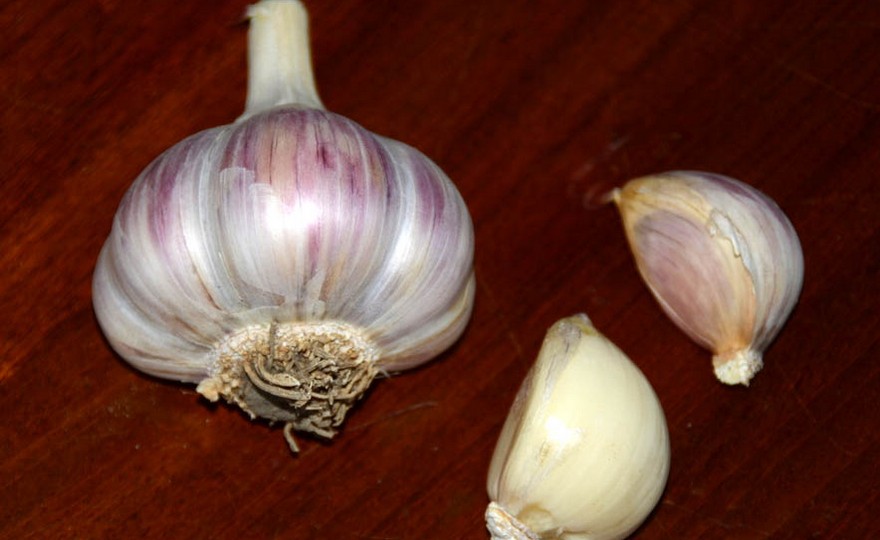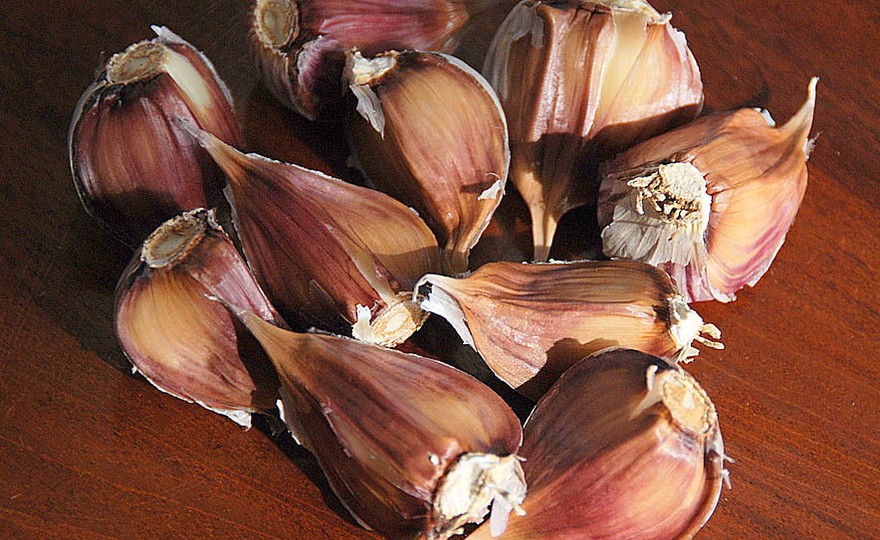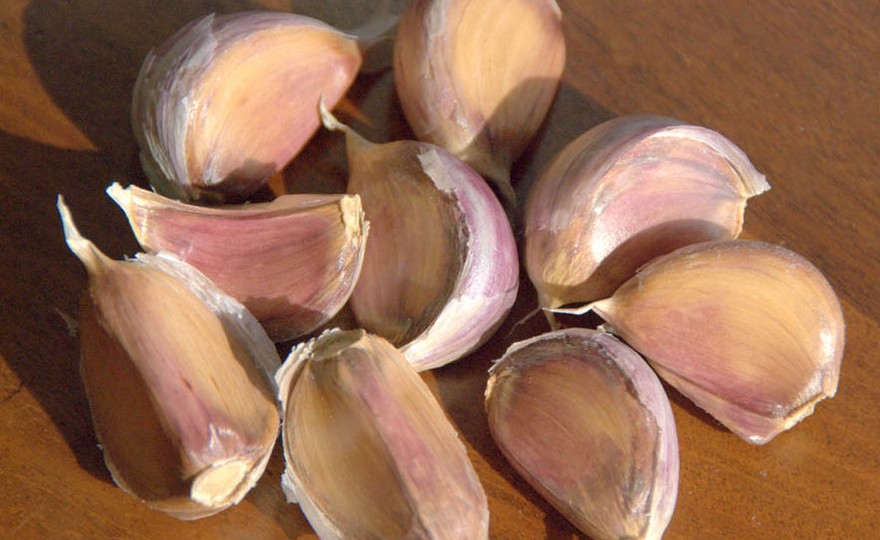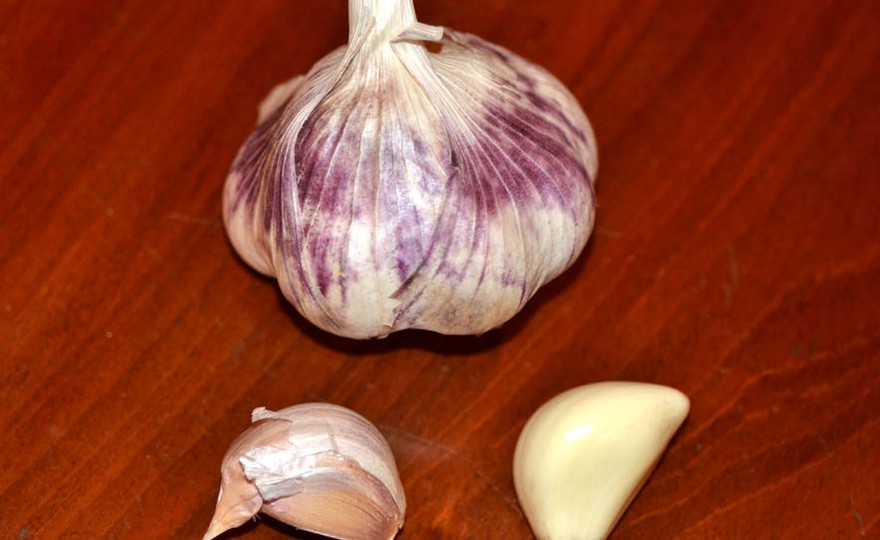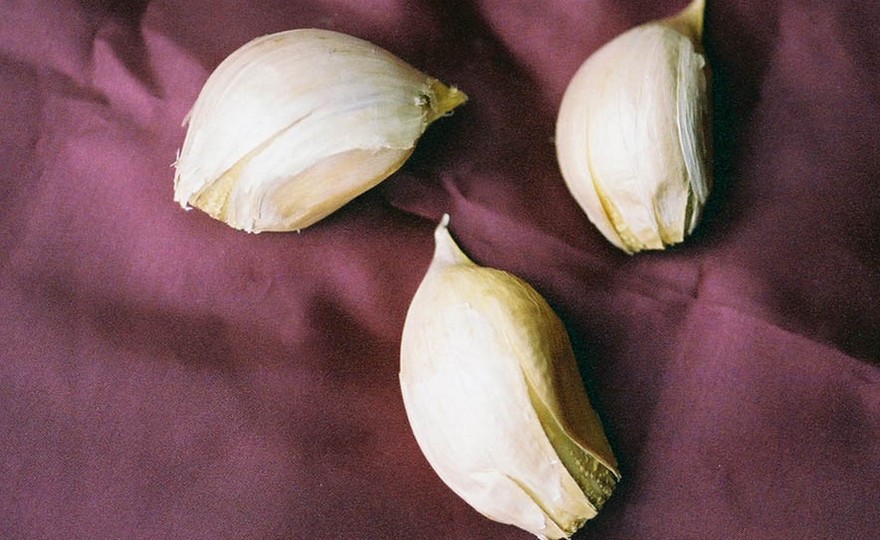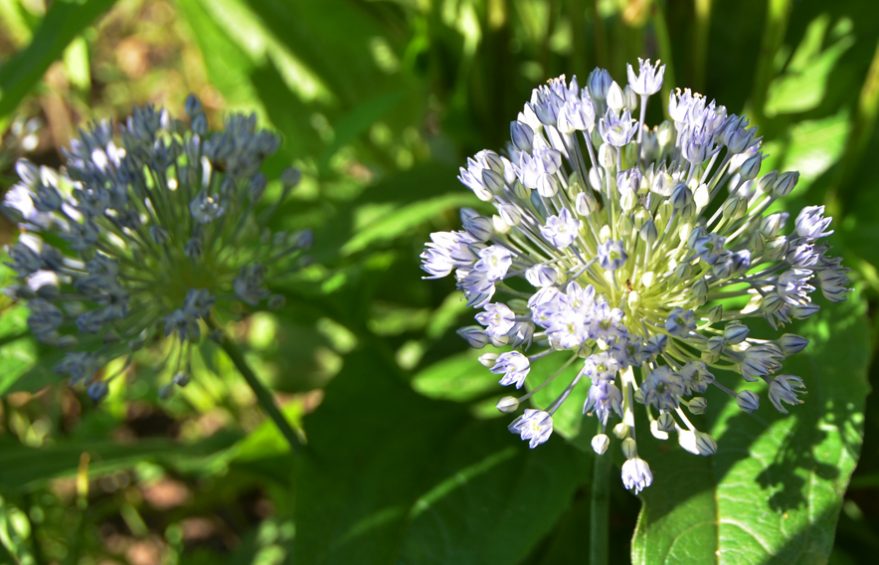Of all the types of garlic available today, the Purple Stripes are genetically closest to the original species, and they are the ancestors of all of the garlic cultivars grown today. Purple Stripes and Glazed Purple Stripes need a vigorous winter to produce well. They will not thrive in the warmer climates. Marbled Purple Stripes do well in areas with mild winters and early warm springs.
We have found Metechi to be, consistently, one of the hottest garlics that we grow, but Ted Jordan Meredith in his landmark book, The Complete Book of Garlic has a very different opinion. He states:
“Views on the culinary merit of ‘Metechi’ vary widely. In my experience it is not particularly notable when raw, and I find its cooked texture mealy and its flavor lacking. Others, however, regard ‘Metechi’ very highly (that would be me among others) extolling the virtues of its hot, strong flavor…”
Later Meredith makes this very interesting statement in which he references The Fort Collins Study. The Fort Collins Study is a rigorous scientific study, completed and published in 2004 at The National Center for Genetic Resources Preservation in Fort Collins, Colorado, which looked at the genetic differences between garlic clones being cultivated in North America. Meredith is referring to the vastly different taste and flavor qualities experienced in supposedly the same cultivar :
“The Fort Collins Study (Volk et al.2004 )included ‘Metechi’ from two different commercial sources. ‘Metechi’ from one of the sources clustered with Purple Stripes, not the Marbled Purple Stripes. This could suggest that more than one cultivar carries the name.”
Metechi is a late-maturing cultivar that is highly productive in a wide range of climates and growing conditions. In southern and northern growing environments, Metechi produces large bulbs, but each bulb consists of, at most, 4-5 very large cloves, as you can see in the photo below.
Metechi is a good storer, and it is among the better hardnecks for regions with warm winters and early springs.
Garlic is best when planted in the fall, but can be planted in the spring as soon as the ground can be worked. If planting in the fall, plant 30 days before the ground freezes and mulch with straw or alfalfa hay if possible. Garlic must have some exposure to cold for several weeks or it will not bulb. Amend the soil with potash and phosphate before planting. Plant the cloves 1-2 in. deep and 4-6 in. apart in rows separated by 12-18 in.
Harvest in mid-summer when 2/3 of the stalk has turned brown or yellow. Dig the bulbs from the soil with stalks attached. Cure in a dry, shaded area with lots of air circulation for 4-6 weeks. Stalks can then be removed from the bulbs.
| Type | Spacing | Planting Depth | HZ | Maturation | |
| Marbled Purple Stripe | 6-8 in. | 3-4 in. | 1-6 | 240-270 Days |

